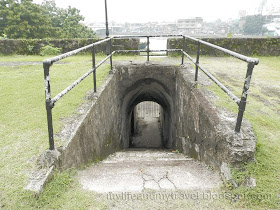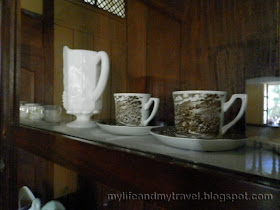I think all kids love planes. That's why the PAF Aerospace Museum is one of the popular educational tour destinations in Metro Manila. This Museum is a legacy, built to honor our heroes in the Philippine Air Force.
 |
| The PAF Aerospace Museum, Villamor Air Base is beside Ninoy Aquino International Airport Terminal 3. The Museum was opened in June 2007. Villamor Air Base is the PAF's first headquarters since it became independent of the Philippine Army on July 1, 1947. |
 |
| YS - 11A: Atransport aircraft mainly for use by the President and the first family from 1971 to 1993. |
 |
| T-41: Acquired by the Philippines in 1968 for pilot training. |
 |
| T-S "TEXAN": Aquired in 1948 and served as basic trainer. |
 |
| T - 28 "TROJAN": Purchased in 1960 and used in basic training and counter insurgency. It was commonly called "Tora-Tora" since it is similar to the Japanese Zero Fighter in WWII. |
 |
C – 47
“Gooney Bird”: The World most famous commercial transport plane. Acquired in
1946 and was used by the Philippine Army Air Corps for air transport functions.
In 1973 it was converted to a fighting aircraft. It was also used for
rainmaking and rain suppression operations.
|
 |
| ALBATROSS
“HU – 16”: Called general utility amphibian plane. It has the ability to take
off and land in both land and water. |
 |
UH – IH
“IROQUOIS”: Also known as “HUEY”, used
primarily for air mobility and rapid deployment of troops.
|
 |
F – 5A
“FREEDOM FIGHTER: Delivered to the Philippines on August 29, 1965 and was
assigned to the 5th Fighter Wing, Basa Air Base, Pampanga. Today, it
serves as the front line fighter of the PAF.
|
 |
F – 86D:
Acquired by the PAF in 1960 and was used for air defense functions. It was
phased out in 1968.
|
 |
F – 8H:
Delivered to the Philippines in 1978. Used for air defense, surveillance and
reconnaissance missions.
|
 |
T – 33 “T –
Bird”: The first Jet trainer. Acquired in 1955 and was used for jet
qualification, instrument training and proficiency flying. It was the World’s
most widely used jet trainer.
|
 |
| S –
62B / HH – 52A “SIKORSKY”: Used to provide air transport for the President of
the Philippines from 1968 to 1975. It was eventually phased out due to its
engine feature that did not conform to the requirements for VIP transport. |
 |
H – 34
“CHOCTAW” (S-58): Used in search and rescue operations from 1969 to 1980. It
was also used for troop transport, aerial photogrammetry, mapping and
intelligence work. It was phased out in October 1974.
|
A
souvenir shop is also in the Museum with various PAF aircraft and PAF logo
items such as T- shirts for sale. Visitors can purchase refreshments and snacks
here as well. The entrance fee is 20 PHP/person and complimentary for Air Force
family members.
For more information:
Contact#: (63) 2-8323498
Hours
of Operation: 8:00am - 12:00pm (Monday to Friday), 8:00am - 12:00pm (Saturday)








































































